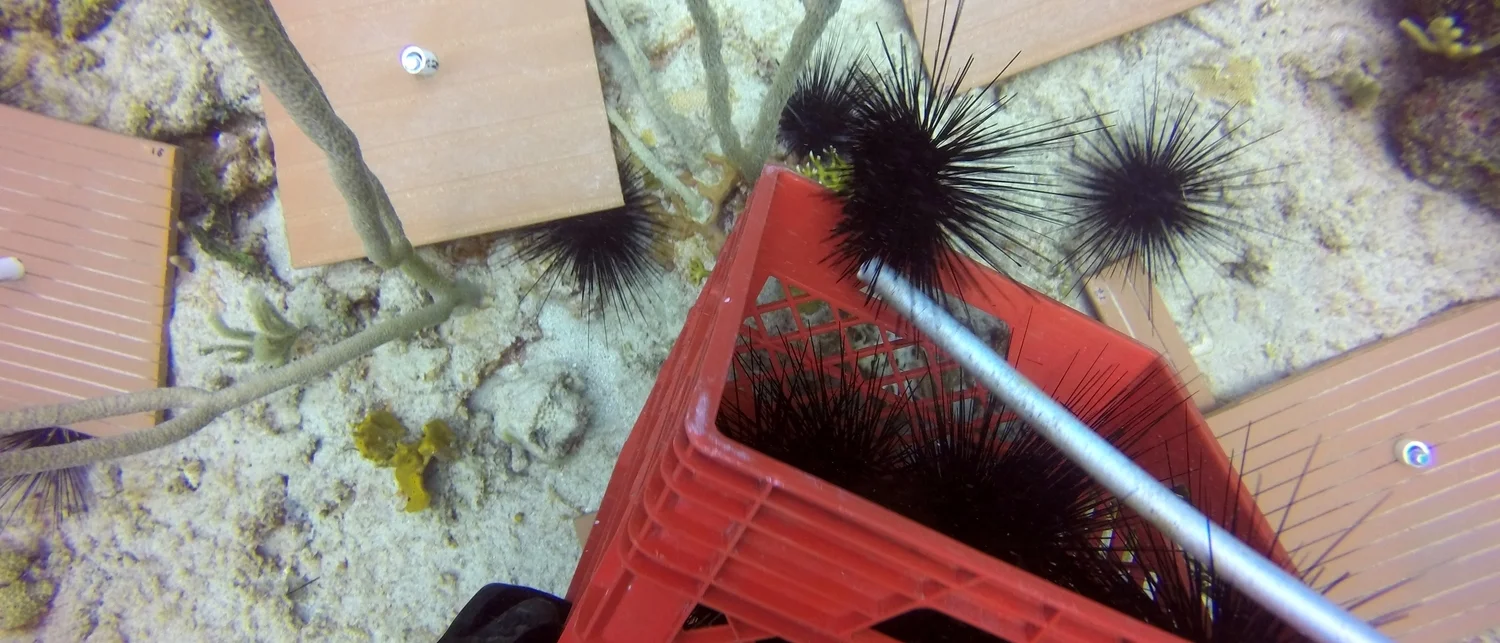barriers to coral reef recovery: Algal succession, Diadema urchins and coral recruitment
Antigua, W.I.
In recent decades, Caribbean reefs have experienced widespread shifts from pristine, coral-dominated states to degraded states dominated by algae. Antigua's reefs are some of the most degraded in the region. While numerous factors have contributed to these declines, a major driver was a mass-mortality of Diadema antillarum (long spine) sea urchins in 1983-1984 when a disease outbreak killed 99% of the population across the Caribbean. Diadema are incredibly effective algae grazers...
I received a 2014-2015 Dartmouth Reynolds Fellowship to address these knowledge gaps through a set of experiments in Antigua. Working in collaboration with Ruleo Camacho and Dr. Bob Steneck, I designed an experiment testing if different textured terra cotta tiles attracted different algal communities and subsequently how this would affect recruiting corals. We also incorporated the presence or absence of Diadema antillarum into our experimental design to test their effects on algal succession and coral recruitment. In October 2014 we installed our experiment on six patch reefs off the south coast of Antigua at 8m depth. Throughout the experiment I measure algal succession on the basal tiles throughout the year and work to maintain consistent Diadema densities on the patches, testing for effects of tile texture and/or Diadema presence on algal canopy heights and species distributions. I will then install smaller (10cm x 10cm) terra cotta tiles on top of each basal tile, using a 1cm spacer to create a gap between tile layers. These upper tiles will serve as the recruitment tiles, with the expectation that most coral recruits will be found on the underside and within the small gap. In July of 2015 I will collect the recruitment tiles, measure recruited corals microscopically, and test for effects of algal communities on coral recruitment.
Since starting this experiment, I have also become interested in questions around Diadema recovery. Pockets of recovery exist throughout Antigua's reefs and coastline, but many of these pockets remain spatially constrained and do not expand to surrounding areas. Diadema retention once transplanted to our experimental patches was expected to be relatively high as algal abundance is high and predator abundance is quite low. However, Diadema retention has been a constant struggle and we're wondering why. One of our hypotheses is that the low structural complexity of degraded reefs reduces their tenacity with any sort of water movement. Another is that algal turfs and the sediment that collects in them impede their grip on the substrate. We will be running some additional experiments to test these hypotheses.
Collaborators & acknowledgements: Dartmouth Reynolds Fellowship, Dr. Bob Steneck, Ruleo Camacho, Dr. Brian Cooper and Jasiel Murphy at the Environment Unit of Antigua National Parks, Paul Deeth of the Admiral's Inn for generous use of his boat.
